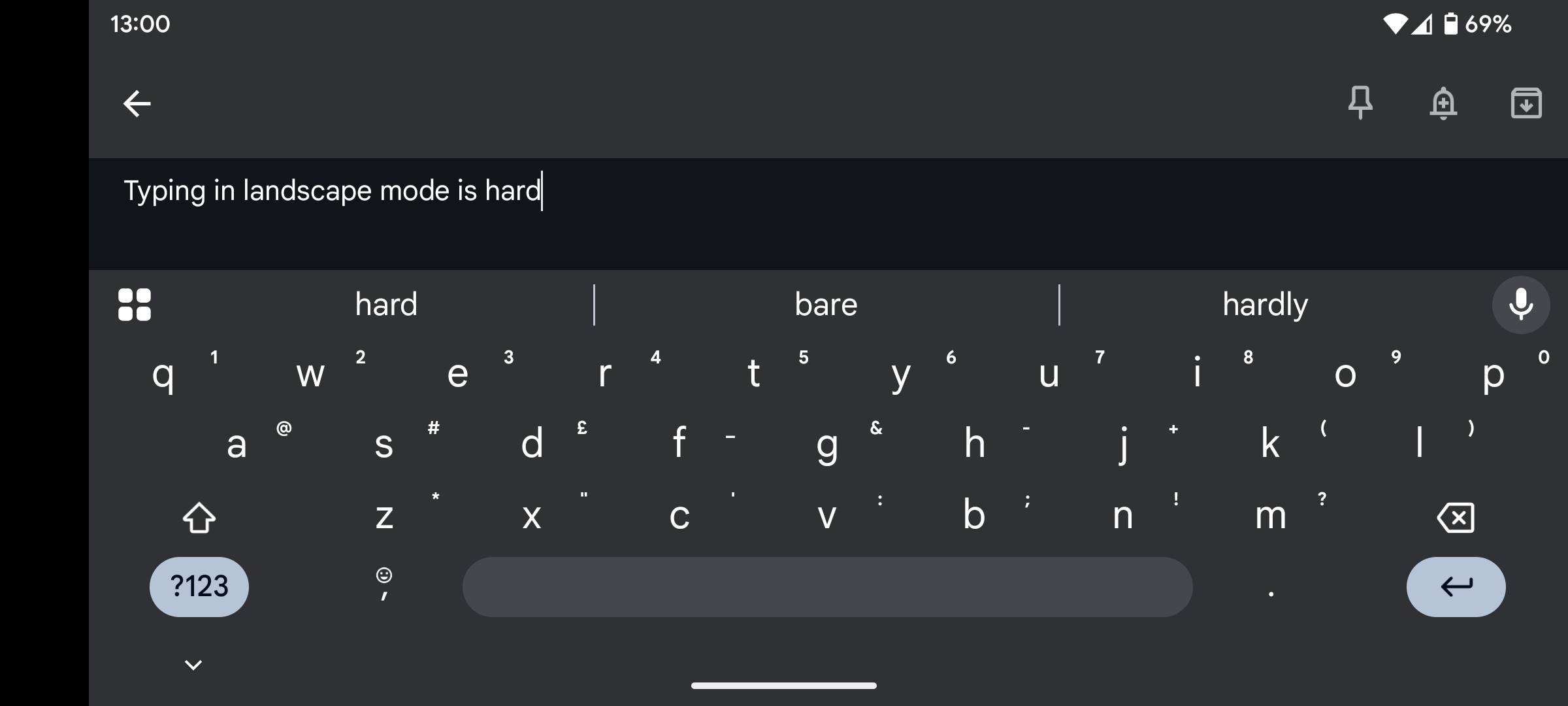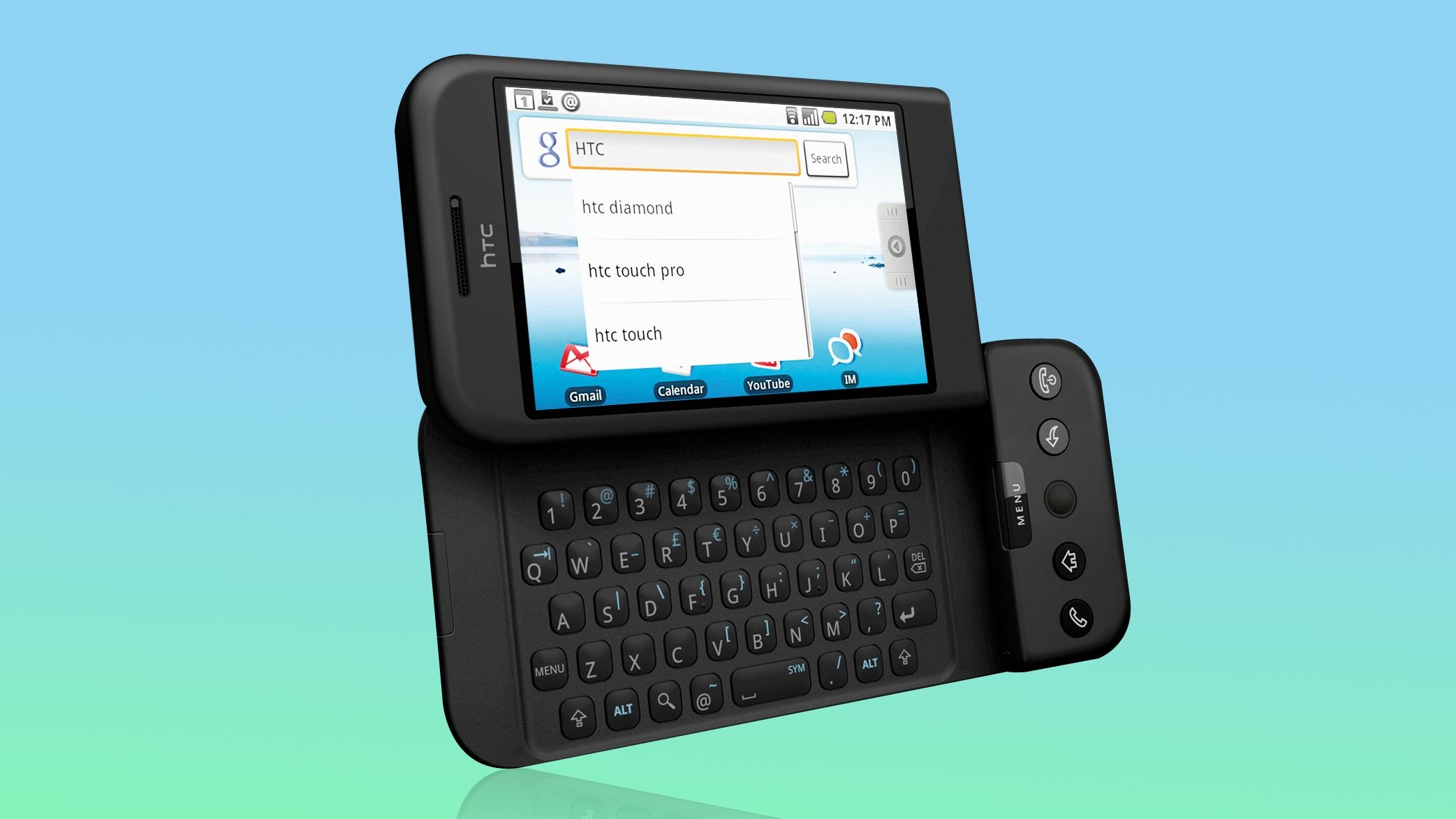This year has seen two major developments in smartphone hardware. The emergence of ultra-slim devices and highly polished foldables has finally solved two of the problems that killed off one of my favorite ever types of gadgets: the smartphone with a physical QWERTY keyboard. So, isn’t it time for a comeback?
Phones With Keyboards Were Amazing
I used to love phones with physical keyboards, and I’m not just talking about the BlackBerry, although I owned one of those too. I mean devices like the first Android phone, the T-Mobile G1, with its slide-out QWERTY keyboard, or even older handsets like the Windows Mobile-powered HTC TyTN II from 2007 that featured a hinge that propped up the screen like a tiny laptop.
There were loads of devices like it, from Samsung, Motorola, LG, Sony, and more. And they were awesome.
Looking back, though, it’s not exactly hard to see why they died out. They were thick and clunky devices. The G1 was 0.67 inches thick and had a tiny 3.2-inch display; the TyTN II was three-quarters of an inch thick, and you needed a stylus to use the software keyboard.
When the iPhone took off with its sleek design, minimal moving parts, and easy-to-use touchscreen typing, the physical keyboard immediately looked dated. But when these phones disappeared, they took a lot of practical usability with them.
In some ways, they were ahead of their time, but the tech is now ready for their comeback. A phone with a physical keyboard could now be as thin as the Galaxy Z Fold 7, which is to say about half the size of the G1. Yet it would have a much bigger screen and a lot more power to take full advantage of its potential.
Physical QWERTY Keyboards Bring Huge Benefits
The biggest benefit to a new smartphone with a slide or fold-out keyboard would be to your typing speed. Software keyboards on modern phones are great in portrait mode, albeit they’re still very heavily reliant on autocorrect. But a quality, well-designed physical keyboard will always be better than a software one, especially if you need to do a lot of typing.
You could have the best of both worlds: touchscreen typing for notes and messaging, and switch to the physical keyboard for anything more.
It would also vastly aid usability and multitasking. I said that software keyboards are good in portrait mode, but they’re still absolutely terrible in landscape mode, where you can barely fit more than a couple of lines of text onscreen at any time. Switching into horizontal mode is ideal when working on larger documents, but when more than half the screen is taken up by the keyboard, it rather ruins the effect.
The same goes for multitasking, which becomes a real chore in either orientation when you’ve got the keyboard open. Having a physical keyboard frees up the whole display area for two apps in split-screen mode, and makes it easier to swipe between open apps as well.
This would also bring benefits for the new desktop mode in Android 16. It could help turn your smartphone into a genuine mini-laptop. With a physical keyboard and the screen as a trackpad, you’d be able to make full use of the power of your phone wherever you’ve got access to a desktop monitor.
And as someone who enjoys retro gaming using emulators for consoles that had physical buttons, it’s easy to imagine how gaming could be helped that as well. The keyboard might even double as an integrated controller, something which no other phone can do, and fix one of the problems with Android gaming.
The Time Is Right for the Return of the Keyboard
I refuse to believe that there isn’t at least a small but enthusiastic market for a device with a physical keyboard. But I’m not holding my breath waiting for it to happen. Phones are boring these days, and the adventurous spirit of early Android manufacturers like HTC and LG is long gone. We no longer get experimental or outright wacky Android phones; they all conform to the same look and feel as each other.
Yet the time is right for their return. The technology exists to take the phones of 15 or 20 years ago and finally fulfill their promise. They could be thinner and lighter, and bigger and more powerful than ever, and could unleash a whole new era of smartphone creativity and productivity. Until then, we’re stuck with writing on glass.



